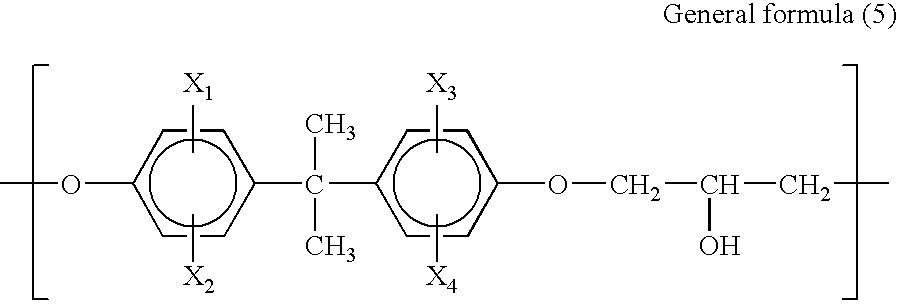Resin composition and molded article
a technology of resin composition and molded article, which is applied in the field of resin composition, can solve the problems of destroying the scenery, exerting a bad influence on the ecological system, and still has some problems to be solved, and achieves the effects of improving the characteristic properties of molded articles such as impact resistance, stiffness, hydrolysis resistance and heat resistan
- Summary
- Abstract
- Description
- Claims
- Application Information
AI Technical Summary
Benefits of technology
Problems solved by technology
Method used
Image
Examples
production example 1-1
Production of PLLA1
[0214]0.005 part by weight of tin octylate was added to and reacted with 100 parts by weight of L-lactide (produced by Musashino Kagaku Kenkyusho Co., Ltd., optical purity of 100%) at 180° C. for 2 hours in a nitrogen atmosphere by means of a reactor having a stirring blade. Thereafter, phosphoric acid was added in an amount 1.2 times the equivalent of tin octylate, the residual lactide was removed at 13.3 Pa, and the obtained product was formed into a chip to obtain poly(L-lactic acid) (PLLA1). The obtained PLLA1 had a weight average molecular weight of 152,000, a glass transition point (Tg) of 63° C., a melting point (Tm) of 180° C., a carboxyl group content of 14 eq / ton and a lactide content of 350 wtppm.
production example 1-2
Production of PLLA2
[0215]Poly(L-lactic acid) (PLLA2) was produced in the same manner as in Production Example 1-1 except that the residual lactide was removed at 1.3 kPa. The obtained PLLA2 had a weight average molecular weight of 152,000, a glass transition point (Tg) of 63° C., a melting point (Tm) of 180° C., a carboxyl group content of 14 eq / ton and a lactide content of 1,600 wtppm.
production example 1-3
Production of PDLA1
[0216]0.005 part by weight of tin octylate was added to and reacted with 100 parts by weight of D-lactide (produced by Musashino Kagaku Kenkyusho Co., Ltd., optical purity of 100%) at 180° C. for 2 hours in a nitrogen atmosphere by means of a reactor having a stirring blade. Thereafter, phosphoric acid was added in an amount 1.2 times the equivalent of tin octylate, the residual lactide was removed at 13.3 Pa, and the obtained product was formed into a chip to obtain poly(D-lactic acid) (PDLA1). The obtained PDLA1 had a weight average molecular weight of 151,000, a glass transition point (Tg) of 63° C., a melting point (Tm) of 180° C., a carboxyl group content of 15 eq / ton and a lactide content of 450 wtppm.
PUM
| Property | Measurement | Unit |
|---|---|---|
| Temperature | aaaaa | aaaaa |
| Fraction | aaaaa | aaaaa |
| Fraction | aaaaa | aaaaa |
Abstract
Description
Claims
Application Information
 Login to View More
Login to View More - R&D
- Intellectual Property
- Life Sciences
- Materials
- Tech Scout
- Unparalleled Data Quality
- Higher Quality Content
- 60% Fewer Hallucinations
Browse by: Latest US Patents, China's latest patents, Technical Efficacy Thesaurus, Application Domain, Technology Topic, Popular Technical Reports.
© 2025 PatSnap. All rights reserved.Legal|Privacy policy|Modern Slavery Act Transparency Statement|Sitemap|About US| Contact US: help@patsnap.com



